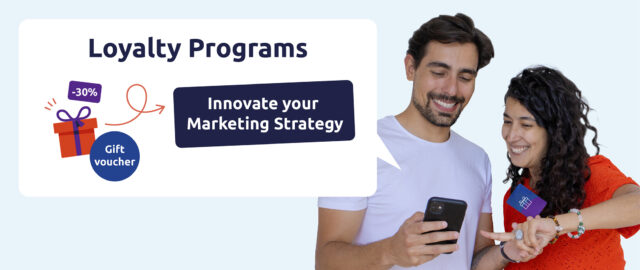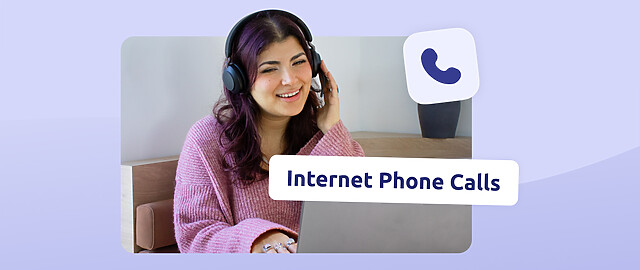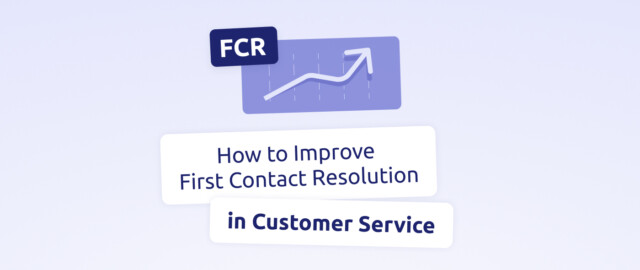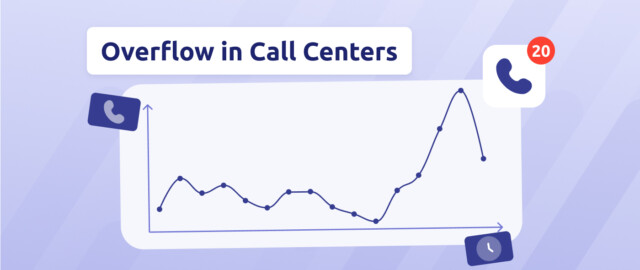Classic loyalty programs are not very appealing
Consumers often feel that retailers are not particularly generous when it comes to awarding loyalty points. This perception is exacerbated when these points are not used to obtain an immediate discount at the checkout or freely redeemable vouchers. In some cases, the points accumulated are intended for redemption in “gift” stores, where the consumer struggles to find items that really pique his or her interest, especially when the required number of points seems out of reach.
The reality is that the generosity of brands towards their loyalty program members is, on average, only 4% of the total amount of their purchases. While this percentage is not negligible, it is not necessarily attractive.
Some loyalty programs disappoint consumers by failing to effectively meet their expectations. Notable examples include strategies where points are only redeemable for unattractive items, or high point thresholds that make it difficult to achieve the desired rewards. These practices often leave customers dissatisfied and call into question the very point of engaging in such programs.
For companies, the loss of revenue is real when loyalty programs are not aligned with consumer needs and preferences. Customer loyalty thus becomes a challenge, and companies risk losing opportunities to maximize the long-term value of their customer relationships.
How can a loyalty program be a powerful marketing tool?
Adapting a loyalty program to economic realities gives brands a significant advantage. By anticipating and responding to consumer needs in times of inflation, companies position their programs as strategic tools that go beyond simple loyalty. This strengthens customer loyalty while attracting new followers, creating a positive dynamic in the face of competition.
Enlightened loyalty programs are becoming real marketing drivers, offering brands an opportunity to stand out from the crowd and build strong relationships with their customers. A judicious investment in loyalty thus becomes a winning strategy for brands keen to stay in tune with consumer expectations.
Visionary companies are intelligently adjusting their programs to address consumers’ financial concerns. By offering benefits that go beyond simple rewards, these programs become concrete sources of savings for participants.

New loyalty formulas are more attractive
Loyalty programs are undergoing a profound transformation to meet modern consumer expectations. Today’s most attractive loyalty formulas are those that integrate five essential elements to guarantee an exceptional customer experience.
1. The customer must feel listened to:
The most successful loyalty programs are those that place the customer at the heart of their strategy. It’s not just about rewarding purchases, but creating a personalized experience. Brands that invest in understanding their customers’ individual needs and adjust their offers accordingly boost satisfaction and loyalty.
2. Rewarding loyalty over time:
The notion of Customer lifetime value is one of today’s most important indicators. Rather than rewarding the frequency of purchase, effective loyalty programs recognize and reward loyalty over time. This creates a deeper bond between the brand and the customer, strengthening the long-term relationship.

3. The simplicity of the loyalty program:
Simplicity is key. Modern consumers are in a hurry, and a complex loyalty program can become an obstacle. Clear rewards, simple mechanisms and ease of use all contribute to the success of a loyalty program today.
4. Value alignment :
Consumers are increasingly sensitive to brand values. Loyalty programs that encourage ethical and sustainable consumption practices, such as The Body Shop’s, which rewards customers by doubling their points through the use of product refills, create a deeper connection with customers. The alignment of values becomes a powerful catalyst for loyalty.
5. Emotional connection with the brand :
Brands such as Sephora have created experiences that go beyond the simple act of purchasing. Exclusive benefits for different tiers (White, Black and Gold), personalized experiences (larger birthday gifts for each tier) and special attention reinforce this emotional connection, encouraging customers to remain loyal to the brand.
By understanding and responding to changing consumer expectations, brands can not only retain existing customers but also attract new ones in an increasingly competitive business environment.
Paid loyalty programs work best
Customers want privileges, consideration, and advantages, and they’re willing to pay (a little) for them.
Witness the success of the Amazon Prime program, which, for 69.90 euros a year or 6.99 euros a month, gives access to a whole range of benefits, the most popular of which is free delivery within 1 working day, with no restrictions.
Amazon reports that there were 90 million of them in the US at the end of 2017, and it turns out that they spend much more than other Amazon customers.
How do you set up a loyalty program?
When it comes to the practical implementation of a loyalty program, it’s essential to choose effective means of communication and make full use of the functionalities offered by Diabolocom.
- Sending regular personalized SMS messages and emails is a powerful way to maintain a connection with loyal customers. These messages can inform about exclusive offers, special benefits, and new products, reinforcing customer commitment.
- Setting up priority queues for calls from loyal customers is a strategic tactic. It offers a personalized experience, showing customers that they are valued and helping to reinforce their brand loyalty.
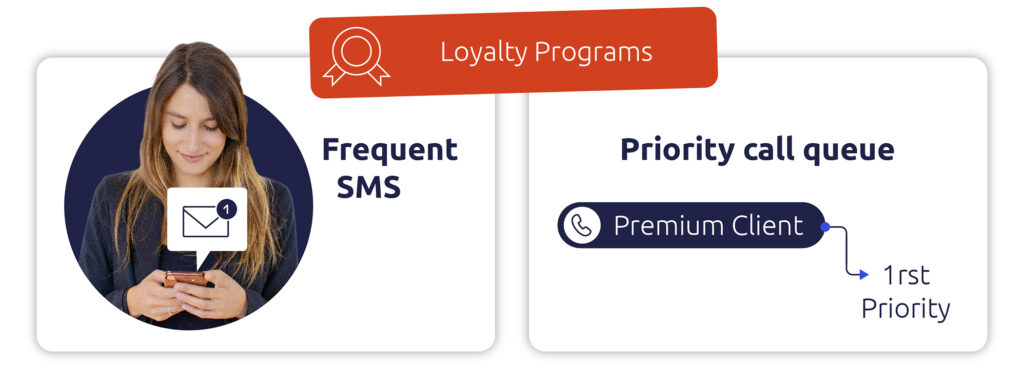
Consistently integrated, these practices add a caring, human dimension to the loyalty program, reinforcing its positive impact on customer retention and overall satisfaction.
Some chains are backing down
Convinced that their loyalty deserves to be rewarded, consumers have no idea how much a loyalty program can cost a retailer.
The impact of benefits and discounts on store margins has prompted some brands to abandon their programs. This is the case with Decathlon, which has communicated to its customers with an email entitled “Goodbye Loyalty Program”.
The brand has clearly understood that transactional logic as the basis of the loyalty mechanism is not enough to retain customers. Genuine customer commitment requires a relational approach.
Another notable case is that of beauty retailer Sephora. Faced with changing consumer expectations and growing competition in the beauty sector, Sephora has undertaken a significant overhaul of its loyalty program.
The company has abandoned its former program based on classic material rewards in favor of a more customer experience-oriented model. The new program not only offers discounts and free products above certain tiers but also focuses on exclusive experiences, such as dedicated customer service and invitations to special events.
This transformation has enabled Sephora to strengthen its emotional connection with its customers, going beyond simple commercial transactions. By adjusting its loyalty program to meet the modern expectations of consumers seeking unique experiences, Sephora has succeeded in maintaining and strengthening its loyal customer base, illustrating the need for retailers to adapt to market changes to remain competitive.
How do you calculate the cost of a loyalty program?
Calculating the cost of a loyalty plan requires in-depth analysis to ensure its financial viability and long-term effectiveness. The formula for calculating the cost is as follows
Total cost of a loyalty plan = Initial costs + Operating costs + Rewards and Benefits costs
- “Initial costs” represent the initial expenses associated with setting up the program.
- “Operational costs” include the ongoing costs of day-to-day program management.
- “Rewards and Benefits costs” are the costs associated with the rewards offered to loyal customers.
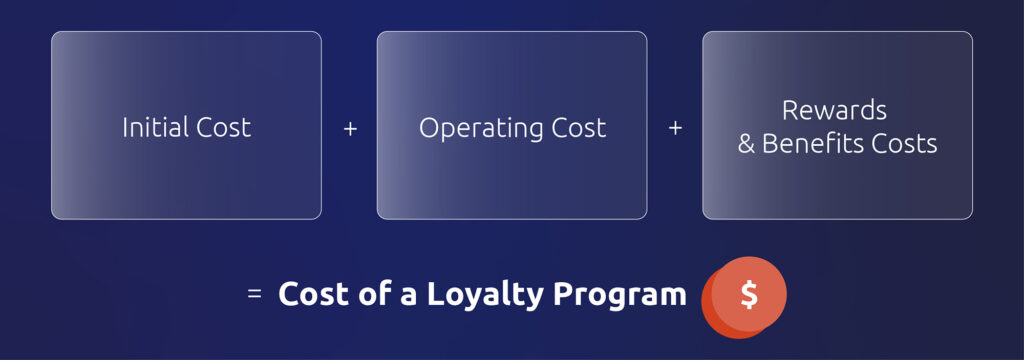
- Evaluation of initial costs:
The first aspect to consider is the initial cost of setting up the program. This includes expenditure on program development, loyalty card design, necessary software, launch campaigns, and possibly staff training. It’s crucial to quantify these initial expenses to get a clear picture of the budget required for start-up.
- Operating costs:
Operational costs include the ongoing expenses associated with the day-to-day management of the program. This includes loyalty software maintenance costs, communication costs to inform customers of benefits and promotions, and ongoing training costs for staff responsible for implementing the program in the field. These costs should be estimated on a monthly or annual basis to assess the long-term financial impact.
- Costs of rewards and benefits:
A major element in the cost of a loyalty program is the rewards and benefits offered to loyal customers. Whether in the form of discounts, gifts or other incentives, it is crucial to estimate the costs associated with these rewards. It may be necessary to negotiate partnerships with suppliers to obtain benefits at a lower cost, while retaining their appeal to customers.
- Measuring Return on Investment (ROI):
In addition to costs, it is imperative to measure the return on investment of the loyalty program. This involves monitoring sales growth, customer loyalty and other key performance indicators.
- Adapting to results:
Finally, the cost of a loyalty plan needs to be evaluated on an ongoing basis, enabling adjustments to be made as a function of the results obtained. If certain strategies are not profitable, or if modifications are required to meet changing customer expectations, it is essential to be able to adjust the program accordingly.
Customer experience at the service of brands
Customers are not so much loyal to loyalty programs as to brands, to the experiences the brand brings them, and to the exceptional relationships the brand builds with them. The strength and quality of the bond that a brand can establish with its customers is the key to real loyalty.
To achieve this, it’s best to know your customers and their expectations before they have to express them. Customer journeys, consumption habits… Make the most of the data from your various exchanges and offer your customers a personalized experience! It’s the best way to engage them and win their loyalty.
The skillful exploitation of communication channels such as SMS, email, and prioritized calls plays a crucial role in loyalty programs. Diabolocom’s omnichannel solution greatly facilitates this omnichannel management by enabling seamless communication across various channels. By integrating it, brands can optimize their interactions with customers, boosting the effectiveness of their loyalty programs.
What’s more, the Diabolocom solution goes beyond optimizing communication channels, offering a significant improvement in customer loyalty. Thanks to its advanced functionalities and holistic approach, the Diabolocom solution helps to create exceptional customer experiences, thereby strengthening customer loyalty.
Integrate our AI models via our APIs or through our contact center solution for an optimal customer experience and reduced operational costs. Contact us today for a personalized demo and discover how Diabolocom can propel your business to new heights of customer engagement.
Curious to know more about Diabolocom?
